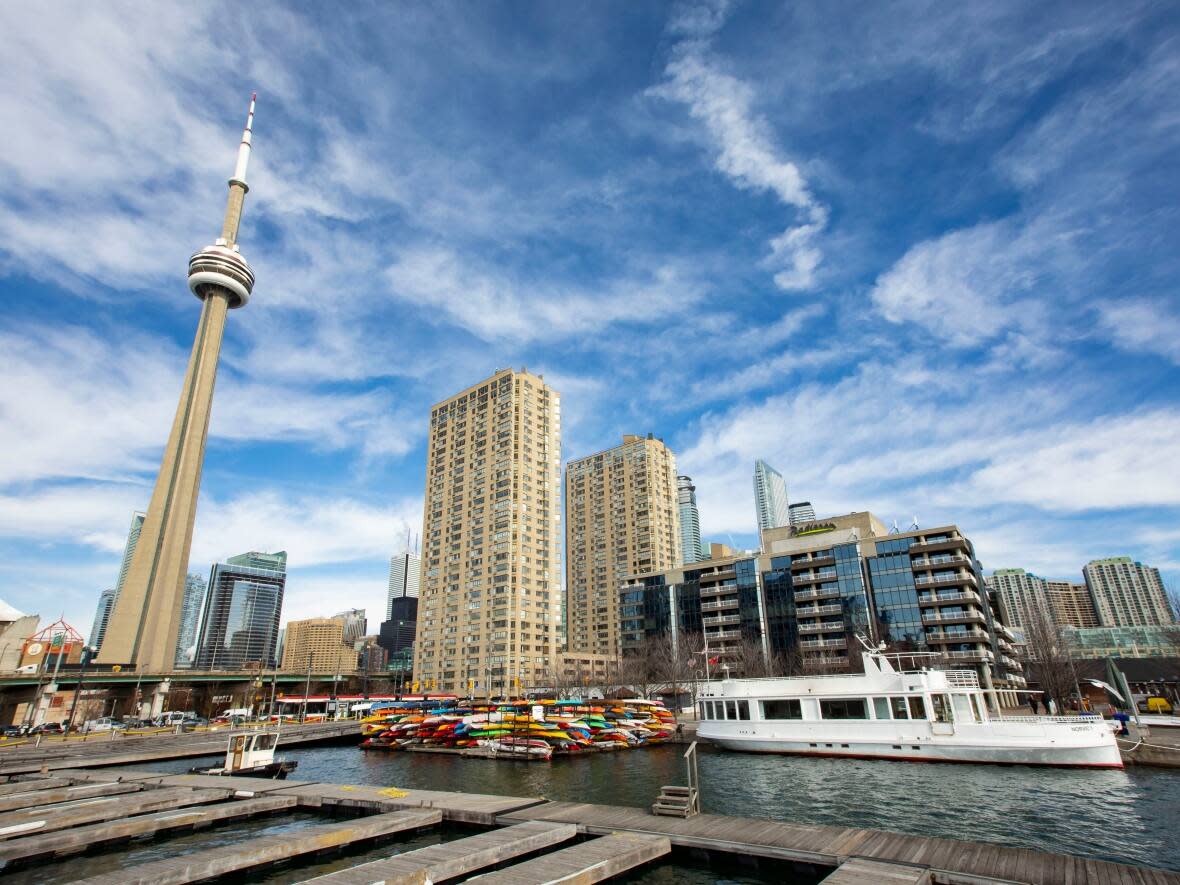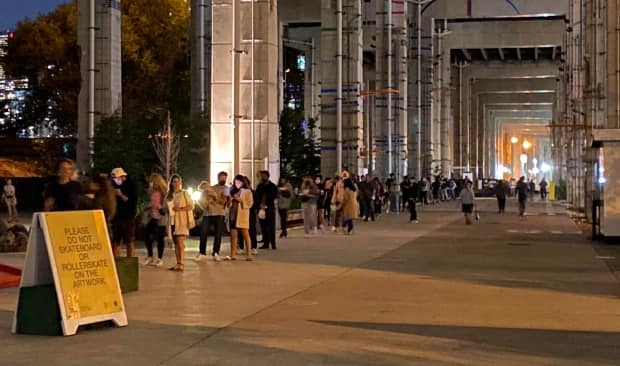Spadina-Fort York could see long lines on election day with 75% fewer polling stations than 2018

Voters in the downtown Toronto riding of Spadina-Fort York could find themselves travelling farther and waiting longer to vote in the Ontario election on June 2 to allow for physical distancing at polling stations amid COVID-19 concerns.
Spadina-Fort York will have 75 per cent fewer voting locations on election day than the riding had on election day in 2018.
Instead of the 116 polling stations from four years ago — which included a number of apartment buildings and condos with single polls — next week the riding will have only 29 polling stations.
The difference, according to Elections Ontario, is that many of those are large neighbourhood voting locations — like the Enercare Centre, Metro Hall, some hotels and schools — which allow for physical distancing.
"These larger locations are also technology enabled, unlike the apartment and condo locations in 2018 … which makes the voting process easier and faster," Jo Langham, an Elections Ontario spokesperson, said in an email.
The technology enabled locations use electronic poll books to quickly check voter registration lists without manually looking through a binder, and vote tabulators to count ballots.
Last summer, Spadina-Fort York was one of 11 Greater Toronto Area ridings that saw the number of its polling stations cut by more than half for last September's federal election. On election day, that drop, along with COVID-19 precautions and logistical errors, translated into long lines for many in the riding and others in the GTA.

Pranav Bakaraju, president of the Spadina-Fort York Ontario NDP riding association, remembers long lines continuing until after midnight, and people leaving lines in the riding without voting out of frustration.
"We don't want a repeat of that," he told CBC Toronto. "The number [of voting locations] is definitely concerning. You always want democracy to be accessible to people."
Prepare for possibility of long lines
Given the pandemic is still a factor in this provincial election, the executive director of the Democratic Engagement Exchange at Toronto Metropolitan University says voters should be prepared for potentially longer lines.
"We are still in this health crisis situation," said John Beebe. "It's a challenging task … [Elections Ontario's] clearly deciding that safety and being spread out is a high priority."
Overall there will be 751 fewer voting locations across the province on election day compared to 2018. In addition to Spadina-Fort York, these 10 provincial ridings will also see a 20 per cent or more decrease in the number of polling stations on election day:
Don Valley North: 81 in 2018, 55 in 2022 — a 32 per cent drop.
Timmins: 32 in 2018, 22 in 2022 — a 31 per cent drop.
Huron-Bruce: 91 in 2018, 68 in 2022 — a 25 per cent drop.
Cambridge: 71 in 2018, 54 in 2022 — a 24 per cent drop.
Parkdale-High Park: 73 in 2018, 56 in 2022 — a 23 per cent drop.
Parry Sound-Muskoka: 92 in 2018, 72 in 2022 — a 22 per cent drop.
Northumberland-Peterborough South: 105 in 2018, 83 in 2022 — a 21 per cent drop.
Nipissing: 69 in 2018, 55 in 2022 — a 20 per cent drop.
Mississauga Centre: 100 in 2018, 80 in 2022 — a 20 per cent drop.
Leeds—Grenville—Thousand Islands and Rideau Lakes: 86 in 2018, 69 in 2022 — a 20 per cent drop.
If voters in any of those ridings are concerned about election day lines, Beebe's advice is to take advantage of the 10 days of advanced polls.
"That's significantly more than what was allowed during the federal election, significantly more than previous provincial elections — so that's great news for everybody," he said.
The advance polls are running daily until May 28, with venues open from 10 a.m. to 8 p.m.
Both advance polls and election day polls have also switched to the bank teller model, according to Elections Ontario. That means the next voter in line can go to whichever polling official is free instead of waiting for the person designated for their poll.

 Yahoo Movies
Yahoo Movies 
